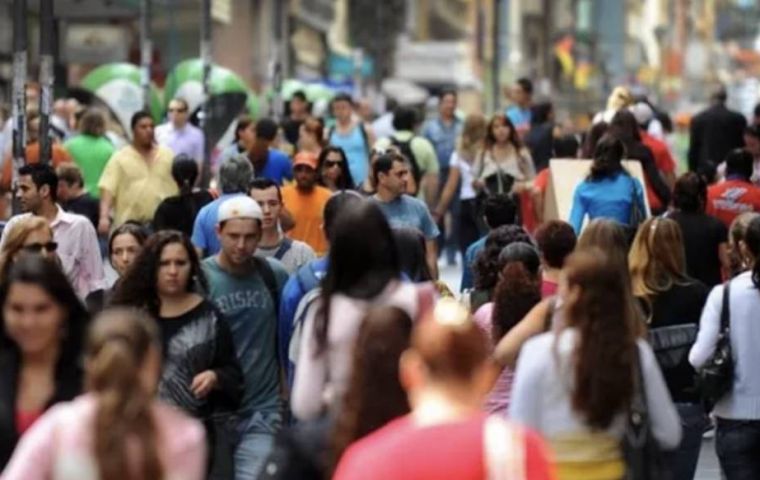
BRASILIA, Oct 30 (NNN-AGENCIA BRASIL) — A study released late last week by the Brazilian Institute of Geography and Statistics (IGBE) showed that by 2022 the population in South America’s largest country consisted mostly of women.
For the first time in five decades, women are in the majority across all of Brazil’s major regions. Only the North had been missing to cement the historical trend of female predominance—not anymore, as per the 2022 Demographic Census released on Oct. 27 by the IBGE.
The country has a resident population of 203,080,756. Of this total, 104,548,325 (51.5%) are women and 98,532,431 (48.5%) are men. This means there is a surplus of 6,015,894 women compared to men. For registration purposes, the IBGE takes into account residents’ biological sex assigned at birth.
The main indicator used in this census category is called the “sex ratio,” which takes into account the number of men compared to the number of women. If the amount is less than 100, there are more women. If it goes higher than 100, there are more men. If, back in 1980, there were 98.7 men for every 100 women, in 2022 this ratio changed to 94.2 men for every 100 women.
Breaking it down by region, the sex ratio in the North was 103.4 in 1980. In the last census, in 2010, it stood at 101.8. Now, it is 99.7. In the Northeast, considering the same years, it went from 95.8 to 95.3, and is now 93.5; in the Southeast, it sank from 98.9 to 94.6, and 92.9; in the South, from 100.3 to 96.3, and 95.0; and, in the Midwest, from 103.4 to 98.6, and 96.7.
When considering age groups in Brazil, the proportion of men is highest between birth and 19 years of age. Between the ages of 25 and 29, the female population becomes the majority, and the proportion continues to grow at older ages. The document explains the initial difference by the higher number of male births. And the change in adulthood is due to higher male mortality rates in youth.
“The causes of death in this young male population are linked to unnatural causes. These are violent causes and accidents, which affect more people between the ages of 20 and 40, therefore much more than women,” said IBGE researcher Izabel Guimarães. — NNN-AGENCIA BRASIL)






